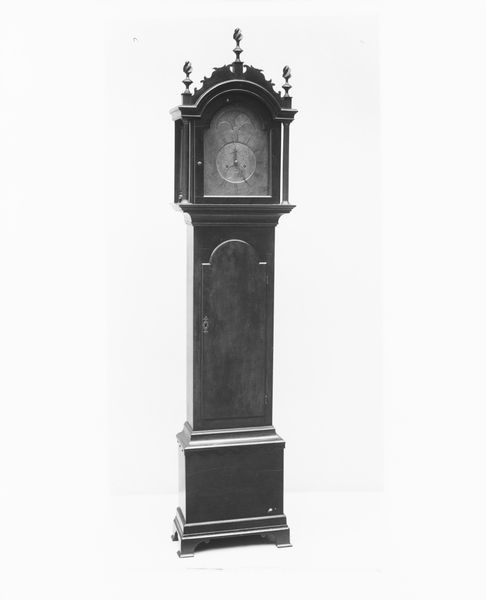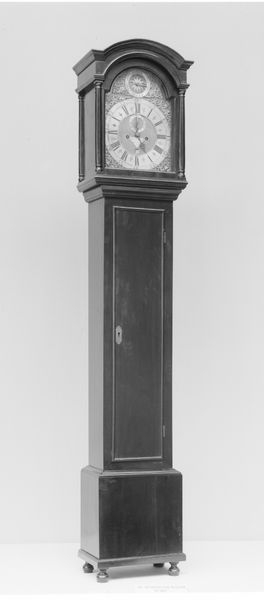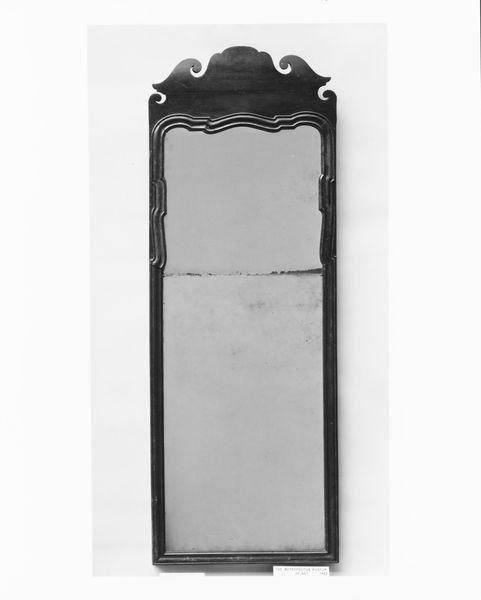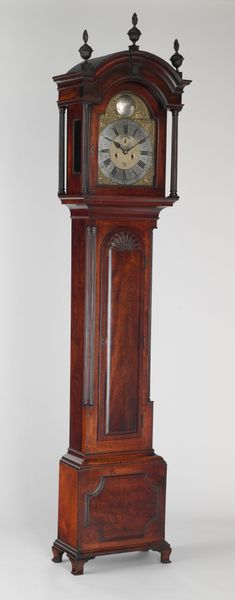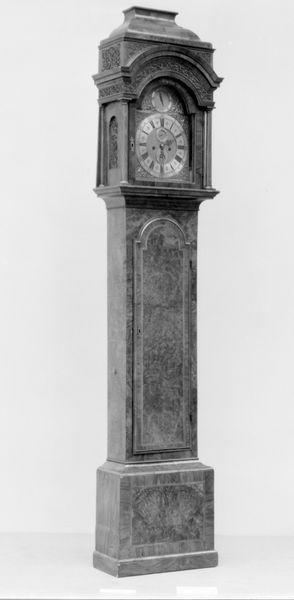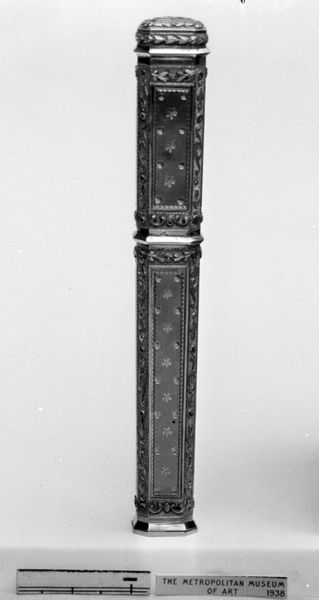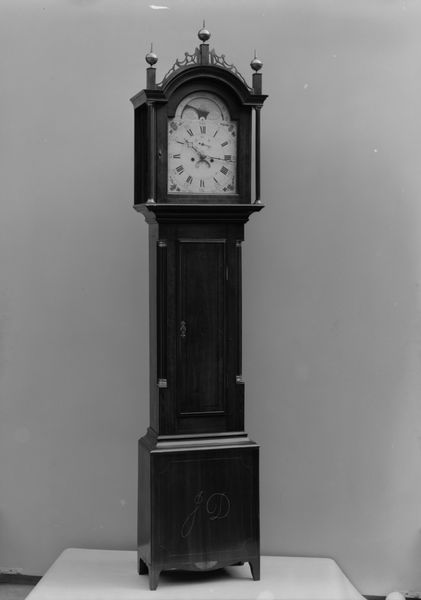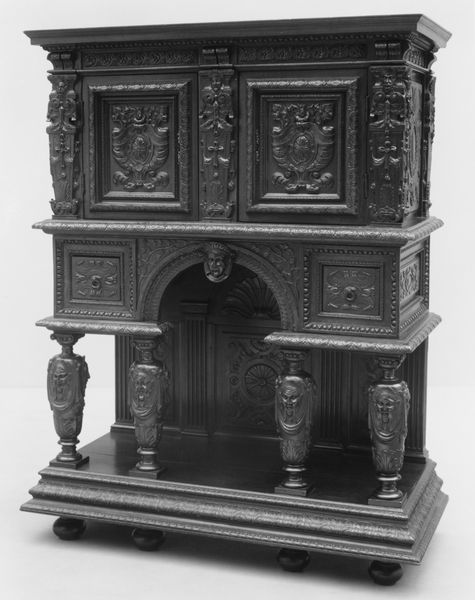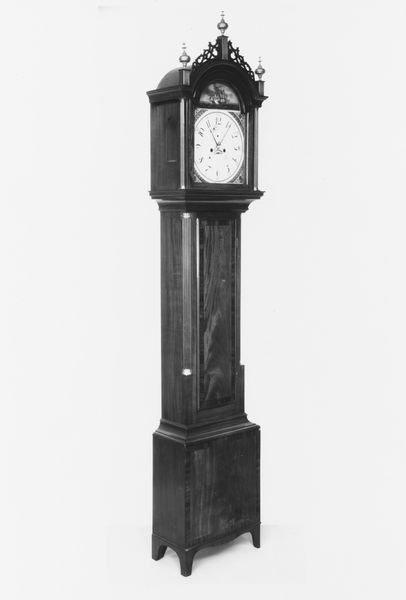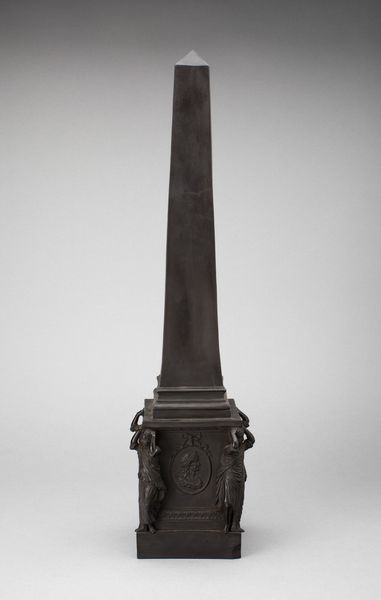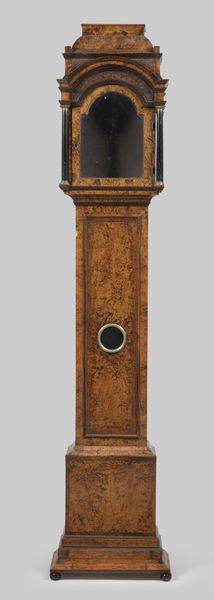
Dimensions: 64 3/4 × 13 in. (164.5 × 33 cm)
Copyright: Public Domain
Curator: The weight of time. That’s the immediate feeling I get from this piece. A somber, almost gothic sensibility. Art Historian: Indeed. What we have here is a longcase clock, crafted between 1775 and 1780 by James Cowan. It's a testament to the intricate woodworking traditions of the late 18th century. Curator: Cowan… Were his patrons the landed gentry, do you imagine? Did the rhythmic tick-tock mark the slow grind of oppression for the working classes? How did domestic objects reinforce existing social hierarchies at this time? Art Historian: Likely patrons of this style of clock would have belonged to a wealthier merchant class, yes. Their homes would display objects that signalled a growing British empire with access to refined goods and elaborate taste. We can appreciate the detailed Baroque carvings here while being attentive to its display of social position. Curator: It’s certainly hard to ignore the clock’s imposing size. Its scale implies the owner had space to spare. How do we reconcile its potential function, providing an ostensibly accessible measure of time, with its undeniable presence as a symbol of affluence? Was access to accurate time just another commodity only available to those who could afford it? Art Historian: An interesting point to consider! While access to precise timekeeping in the home could signify social status, we might also see the public role of clocks in city squares at this time – an influence that spreads throughout society over the next centuries. Notice also the clock’s ornate decorative-art style – how does its Baroque flourishes suggest power? How does the lion-claw foot exemplify dominance? Curator: Absolutely, those architectural and animalistic choices reflect aspirations beyond mere function. We must deconstruct the ways such aesthetics uphold cultural norms. What stories might its pendulum tell if it could recount all those quarter-days, and full-stops throughout centuries? What would they say of its owners? Art Historian: Well, pondering its stories does suggest an evocative route for further learning. Thank you! Curator: Agreed! Context is vital in how we perceive time itself and how our interpretations can broaden the legacies and understanding of our culture.
Comments
No comments
Be the first to comment and join the conversation on the ultimate creative platform.
